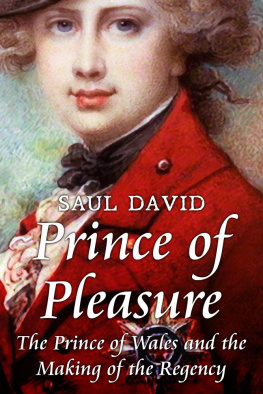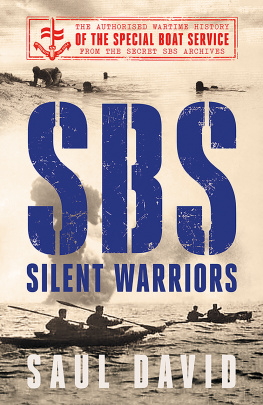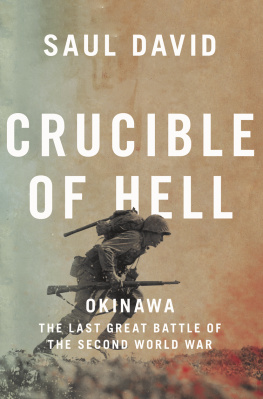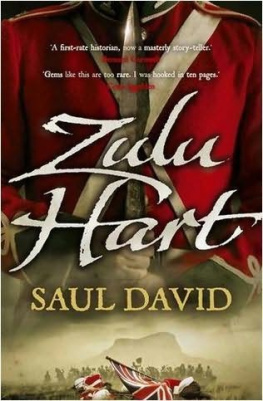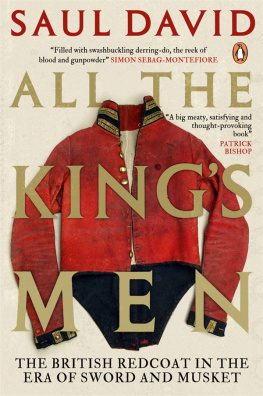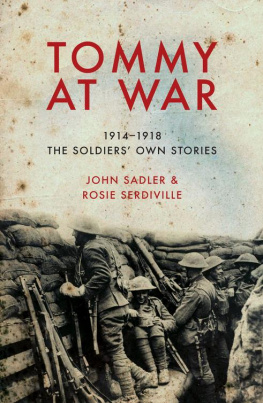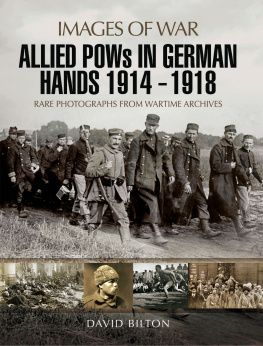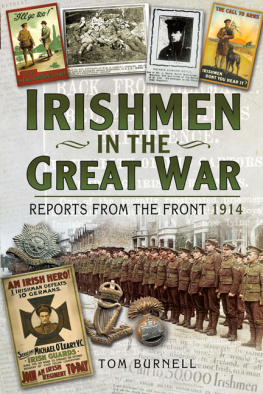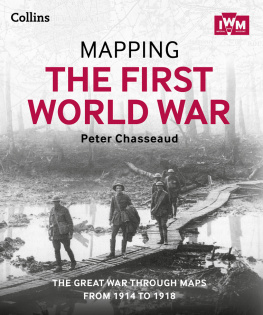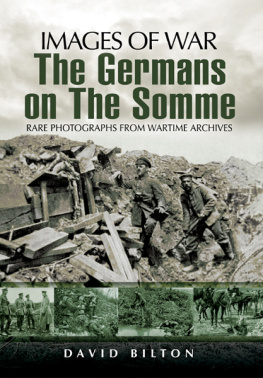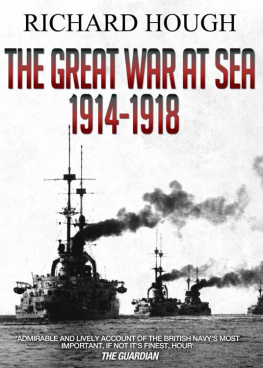Saul David - 100 Days to Victory: How the Great War Was Fought and Won 1914-1918
Here you can read online Saul David - 100 Days to Victory: How the Great War Was Fought and Won 1914-1918 full text of the book (entire story) in english for free. Download pdf and epub, get meaning, cover and reviews about this ebook. year: 2013, publisher: Hodder & Stoughton, genre: History. Description of the work, (preface) as well as reviews are available. Best literature library LitArk.com created for fans of good reading and offers a wide selection of genres:
Romance novel
Science fiction
Adventure
Detective
Science
History
Home and family
Prose
Art
Politics
Computer
Non-fiction
Religion
Business
Children
Humor
Choose a favorite category and find really read worthwhile books. Enjoy immersion in the world of imagination, feel the emotions of the characters or learn something new for yourself, make an fascinating discovery.

- Book:100 Days to Victory: How the Great War Was Fought and Won 1914-1918
- Author:
- Publisher:Hodder & Stoughton
- Genre:
- Year:2013
- Rating:5 / 5
- Favourites:Add to favourites
- Your mark:
- 100
- 1
- 2
- 3
- 4
- 5
100 Days to Victory: How the Great War Was Fought and Won 1914-1918: summary, description and annotation
We offer to read an annotation, description, summary or preface (depends on what the author of the book "100 Days to Victory: How the Great War Was Fought and Won 1914-1918" wrote himself). If you haven't found the necessary information about the book — write in the comments, we will try to find it.
100 Days to Victory: How the Great War Was Fought and Won 1914-1918 — read online for free the complete book (whole text) full work
Below is the text of the book, divided by pages. System saving the place of the last page read, allows you to conveniently read the book "100 Days to Victory: How the Great War Was Fought and Won 1914-1918" online for free, without having to search again every time where you left off. Put a bookmark, and you can go to the page where you finished reading at any time.
Font size:
Interval:
Bookmark:
Saul David is Professor of War Studies at the University ofBuckingham and the bestselling author of Zulu Hart, the firstnovel in the George Hart series, as well as several critically - acclaimed history books, including The Indian Mutiny: 1857(shortlisted for the Westminster Medal for MilitaryLiterature), Zulu: The Heroism and Tragedy of the Zulu Warof 1879 (a Waterstones Military History Book of the Year),Victorias Wars: The Rise of Empire and All the Kings Men.He regularly appears on television and radio.
Visit Sauls website at www.sauldavid.co.uk and follow Saulon Twitter @sauldavid66

www.hodder.co.uk
First published in Great Britain in 2013 by
Hodder & Stoughton
An Hachette UK company
Copyright Saul David 2013
The right of Saul David to be identified as the Author of the Work has been asserted by him in accordance with the Copyright, Designs and Patents Act 1988.
All rights reserved.
No part of this publication may be reproduced, stored in a retrieval system, or transmitted, in any form or by any means without the prior written permission of the publisher, nor be otherwise circulated in any form of binding or cover other than that in which it is published and without a similar condition being imposed on the subsequent purchaser.
A CIP catalogue record for this title is available from the British Library
ISBN 978 1 444 76337 9
Hodder & Stoughton Ltd
338 Euston Road
London NW1 3BH
www.hodder.co.uk
For my darling Natasha.
CONTENTS
M y earliest memory of my grandparents large but ramshackle country house in the Welsh Borders is of the broad staircase up to the first-floor landing where two imposing pictures always caught my attention. Both were of serious young men in uniform, wearing smart military caps, Sam Browne cross-belts and moustaches. Later I discovered they were my grandmothers two elder brothers, and that both had fought in the First World War.
Another prominent image in my grandparents house was of an elderly man sitting with a Springer spaniel at his feet. He was not in uniform, and was clearly too old to fight, yet I surmised from his faraway, slightly doleful expression that he had seen things he would prefer to forget. The photograph was of my paternal great-grandfather who survived four years of service on the Western Front.
The fortunes of my ancestors during the First World War were fairly typical: some paid the ultimate price; others had the good luck to return from the fighting, sound in body if not always in mind. But all played their part, as did the millions of Britons mobilized on the Home Front, in gaining for the Allies the consolation of eventual Victory.
My family, like so many others, was both bystander and participant in the Great War, a war supposedly to end all wars. It now seems scarcely credible that more than five million British men were sent to fight (and , of them to die) in battlefields as far afield as Flanders, Greece, Mesopotamia, Palestine, Egypt, German East Africa (Tanzania), Italy, Turkey, Bulgaria and China. Even in Britain the effects of this first industrialized or total war were far-reaching. Civilian communities were bombed from the air and bombarded from sea. With so many men in uniform, women took on traditional male jobs as firemen, coalmen, bus conductors, munitions workers and so on. They joined the Womens Land Army to help with agricultural production, and were recruited as nurses into the Voluntary Aid Detachments (VADs) or First Aid Nursing Yeomanry (FANY), and as drivers, cooks and telephonists in the Womens Army Auxiliary Corps (WAAC), the Womens Royal Naval Service (WRNS) and the Womens Royal Air Force (WRAF). This huge female contribution to the war effort was to have profound social, economic and political consequences in Britain, not least the introduction of female suffrage in February 1918 .
The government realized what as at stake in 1914 by appealing for enormous numbers of volunteer soldiers and, when that proved insufficient, introducing conscription for the first time in our history (a move that was opposed on religious and moral grounds by , conscientious objectors). It passed the Defence of the Realm Act (DORA), which gave it wide-ranging powers to censor and suppress sensitive information, try suspected spies by court martial and commandeer economic resources for the war effort. It worked with trade unions to prevent strikes and set up vast state-run munitions factories to feed the seemingly insatiable demand for shells and bullets. It introduced rationing and Daylight Summer Time (to give more working hours). And it made a vital, if heavy-handed, contribution to the propaganda war by censoring soldiers letters, closing down radical newspapers (including the socialist Tribune), spreading misinformation about enemy atrocities, and using posters and information films (notably The Somme) to boost morale and bolster public support for the war.
Today the overriding popular perception of the fighting particularly on the Western Front where more than two million British soldiers were killed or wounded is still one of futility and waste, a case of Lions led by Donkeys. In fact, as this book will show, the truth is much more nuanced: many mistakes were made by senior commanders but, far from all being Donkeys, some like Haig, Allenby, Plumer and Byng made a positive contribution in very difficult circumstances; battles like the Somme and Passchendaele may have exacted a terrible cost in lives lost, but they also played a vital role in wearing the Germans down in a long war of attrition; and the trench warfare on the Western Front was not simply a case of two sides banging their heads unimaginatively against a brick wall, but rather an extraordinarily fertile period of military innovation in terms of weapons, tactics, training, logistics and the treatment of casualties innovations that in 1918 would help the Allies to pierce the German lines and win the war.
Moreover the vast majority of ordinary soldiers never stopped believing in the justice of the cause they were fighting for. The trenches were for many a brutal and inhuman experience. But even combat soldiers a small proportion of the total number in uniform spent only a third of their time in the front line, with the remainder spent training, resting and in reserve; and some were even invigorated by the comradeship and excitement of ever-present danger.

Captain Markham David, the authors great-grandfather.
All of these themes are covered by my choice of the hundred key dates and events some directly involving my family that best illustrate the lasting and irrevocable impact the war had on civilians and soldiers across the globe. While all the entries concentrate on a single day, they necessarily include information from a broader time span to give the narrative its context. In this way, and by combining a variety of first-hand sources with the most recent scholarship, I have tried to produce a one-volume history of this highly complex and much misunderstood conflict that is modern, vivid and accessible.
* * *
No aspect of the war is more contested by historians than its origins. In the space of exactly a month from the assassination of the Archduke Franz Ferdinand and his wife in Sarajevo on June 1914 to the Austro-Hungarian declaration of war on Serbia on July (a step that, thanks to Europes alliance system, was almost bound to drag in the other great powers) Europe went from peaceful prosperity to the brink of a war that would bring down four empires and cost more than fifteen million lives. It would also, thanks to the harshness of its peace settlement (signed at Versailles in 1919 ), sow the seeds for a second and even more destructive global conflict, which in turn gave rise to the Cold War.
Font size:
Interval:
Bookmark:
Similar books «100 Days to Victory: How the Great War Was Fought and Won 1914-1918»
Look at similar books to 100 Days to Victory: How the Great War Was Fought and Won 1914-1918. We have selected literature similar in name and meaning in the hope of providing readers with more options to find new, interesting, not yet read works.
Discussion, reviews of the book 100 Days to Victory: How the Great War Was Fought and Won 1914-1918 and just readers' own opinions. Leave your comments, write what you think about the work, its meaning or the main characters. Specify what exactly you liked and what you didn't like, and why you think so.

